
UNIT 1. C O M P U T E R U S E R S
READING
1. Work in groups. Share information on how you use computers in your free
time. Compare answers with other groups and make a list of uses for your class.
PRE-READING
2. You are going to hear four people talk about how they use computers. Before
you listen, try to predict the uses they describe.
User Possible use
primary school teacher
Open University student
girl (Louise), aged 6
artist
3. Now listen to the recordings and note the actual uses described.
User Actual use
primary school teacher
Open University student
girl (Louise), aged 6
artist
4. Now listen to the recordings again to find the answers to these questions:
1) How does the story-telling program encourage children to work
together?
2) In what way is the children's reaction to this program different
from other uses they make of computers?
3) What is the OU student studying?
4) What opportunity has she to meet other students?
5) What can you do with Pets 3?
6) What does Louise do with clipart?
7) How did the artist display work to dealers in the past?
8) What is the difficulty in selling through a website?
5. How do you think these professions might use computers? Compare answers
with others in your group.
architects musicians
interior designers sales people

farmers landscape gardeners
6. Work in pairs. Find out this information from your partner. Make sure you use
the correct tense in your questions. For example:
download music from the Internet [what site]
A Have you ever downloaded music from the Internet?
В What site did you use?
1) send a video email attachment
2) fit an expansion card
3) replace a hard disk
4) fix a printer fault
5) make your own website
6) have a virus
7) watched TV on the Internet
8) write a program
[who to, when]
[which type]
[what model]
[what kind]
[how]
[which virus]
[which station]
[which language]
7. Describe how you use computers in your study and in your free time.
SPECIALIST READING
A. Find the answers to these questions in the following text.
1. Name some types of devices that use 'computers on a chip'.
2. What uses of handheld computers are mentioned in the text?
3. What are the benefits of using computers with the following items?
a Security systems
b Cars
с Phones
4. What smart devices are mentioned in the text?
5. What are smart cards used for?
6. What are the advantages of multimedia?
7. What can medical expert systems do?
8. How can computers help the disabled?
9. What types of computing systems are made available to people in remote
locations using electronic classrooms or boardrooms?
10. What aspects of computing can people power determine?
COMPUTERS MAKE THE WORLD SMALLER AND SMARTER
The ability of tiny computing devices to control complex operations has
transformed the way many tasks are performed, ranging from scientific research to
producing consumer products. Tiny 'computers on a chip' are used in medical
2

equipment, home appliances, cars and toys. Workers use handheld computing devices
to collect data at a customer site, to generate forms, to control inventory, and to
serve as desktop organisers.
Not only is computing equipment getting smaller, it is getting more
sophisticated. Computers are part of many machines and devices that once required
continual human supervision and control. Today, computers in security systems
result in safer environments, computers in cars improve energy efficiency, and
computers in phones provide features such as call forwarding, call monitoring, and
call answering.
These smart machines are designed to take over some of the basic tasks
previously performed by people; by so doing, they make life a little easier and a
little more pleasant.
Smart cards store vital information such as health records, drivers' licenses,
bank balances, and so on. Smart phones, cars, and appliances with built in computers
can be programmed to better meet individual needs.
A smart house has a built-in monitoring system that can turn lights on and off,
open and close windows, operate the oven, and more.
With small computing devices available for 35 performing smart tasks like
cooking dinner, programming the VCR, and controlling the flow of information in an
organization, people are able to spend more time doing what they often do best -
being creative. Computers can help people work more creatively.
Multimedia systems are known for their educational and entertainment value,
which we call 'edutainment'. Multimedia combines text with sound, video,
animation, and graphics, which greatly enhances the interaction between user and
machine and can make information more interesting and appealing to people. Expert
systems software enables computers to 'think' like experts. Medical diagnosis expert
systems, for example, can help doctors pinpoint a patient's illness, suggest further
tests, and prescribe appropriate drugs.
Connectivity enables computers and software that might otherwise be
incompatible to communicate and to share resources. Now that computers are
proliferating in many areas and networks are available for people to access data and
communicate with others, personal computers are becoming interpersonal PCs. They
have the potential to significantly improve the way we relate to each other. Many
people today telecommute -that is, use their computers to stay in touch as with the
office while they are working at home. With the proper tools, hospital staff can get
a diagnosis from a medical expert hundreds or thousands of miles away. Similarly, the
disabled can communicate more effectively with others using computers.
Distance learning and videoconferencing are concepts made possible with the
use of an electronic classroom or boardroom accessible to people in remote locations.
Vast databases of information are currently available to users of the Internet, all of
whom can send mail messages to each other. The information superhighway is
designed to significantly expand this interactive connectivity so that so people all
over the world will have free access to all these resources.
3

People power is critical to ensuring that hardware, software, and connectivity
are effectively integrated in a socially responsible as well. People - computer users
and computer professionals - are the ones who will decide which hardware, software,
and networks endure and how great an impact they will have on our lives.
Ultimately people power must be exercised to ensure that computers are used not
only efficiently but in a socially responsible way.
B. Re-read the text and find the answers to these questions.
1. Match the terms in Table A with the statements in Table B.
Table A Table B
a. Edutainment
b. Multimedia
c. Expert system
d. Telecommute
e. Information superhighway
1. Software that enables computers to “think”
like experts.
2. Use computers to stay in touch with the
office while working at home.
3. Internet system designed to provide free,
interactive access to vast resources for people
all over the world.
4. Multimedia materials with a combination of
educational and entertainment content.
2. Mark the following statements as True or False.
1) Desktop organizers are programs that require desktop computers.
2) Computers are sometimes used to monitor systems that previously needed
human supervision.
3) Networking is a way of allowing otherwise incompatible systems to
communicate and share resources.
4) The use of computers prevents people from being creative.
5) Computer users do not have much influence over the way that computing
develops.
UNIT 2. C O M P U T E R A P P L I C A T I O N S
READING
1. Work in groups. List as many uses as you can for computers in one of these
areas.
1) supermarkets
2) hospitals
4

3) airports
4) police headquarters
2. Let’s talk about cars. Assuming cost is not a problem, what computer
applications would make today's cars safer, more comfortable, more secure and more
efficient? List your ideas; then compare ideas with others in your group.
SPECIALIST READING
A. Find the answers to these questions in the following text.
1. What tool is often used in data mining?
2. What Al method is used for the following processes?
a Separate data into subsets and then analyse the subsets to divide them
into further subsets for a number of levels.
b Continually analyse and compare data until patterns emerge.
с Divide data into groups based on similar features or limited data ranges.
3. What term is used for the patterns found by neural networks?
4. When are clusters used in data mining?
5. What types of data storage can be used in data mining?
6. What can an analyst do to improve the data mining results?
7. Name some of the ways in which data mining is currently used.
DATA MINING
Data mining is simply filtering through large amounts of raw data for useful
information that gives businesses a competitive edge. This information is made up
of meaningful patterns and trends that are already in the data but were previously
unseen.
The most popular tool used when mining is artificial intelligence (AI). AI
technologies try to work the way the human brain works, by making 10 intelligent
guesses, learning by example, and using deductive reasoning. Some of the more
popular AI methods used in data mining include neural networks, clustering, and
decision trees.
Neural networks look at the rules of using data, 15 which are based on the
connections found or on a sample set of data. As a result, the software continually
analyses value and compares it to the other factors, and it compares these factors
repeatedly until it finds patterns emerging. These 20 patterns are known as rules.
The software then looks for other patterns based on these rules or sends out an
alarm when a trigger value is hit.
Clustering divides data into groups based on similar features or limited data
ranges. Clusters are used when data isn't labelled in a way that is favourable to
mining. For instance, an insurance company that wants to find instances of fraud
wouldn't have its records labelled as fraudulent or not fraudulent. But after
5

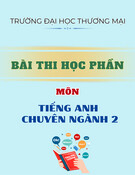
![Đề cương học phần Ứng dụng công nghệ thông tin trong giảng dạy ngoại ngữ (Application of Information Technology in Language Teaching) [Mới nhất]](https://cdn.tailieu.vn/images/document/thumbnail/2025/20250212/tuetuebinhan666/135x160/881739332468.jpg)
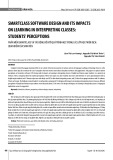
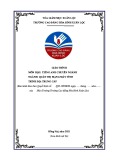

![Tài liệu giảng dạy Tiếng Anh chuyên ngành Công nghệ thông tin & Thiết kế đồ họa - Trường Cao đẳng Công nghệ TP.HCM [Mới nhất]](https://cdn.tailieu.vn/images/document/thumbnail/2024/20240830/xuanphongdacy04/135x160/4881725033257.jpg)


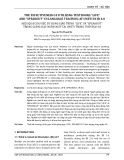


![Từ vựng tiếng Anh về thức ăn và giảm cân [mới nhất, đầy đủ]](https://cdn.tailieu.vn/images/document/thumbnail/2025/20251217/nglinh.diamond@gmail.com/135x160/53091766028543.jpg)

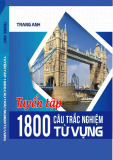
![Tài liệu Từ vựng tiếng Anh Trung cấp [mới nhất]](https://cdn.tailieu.vn/images/document/thumbnail/2025/20250913/nguyentuan250421@gmail.com/135x160/99491757910839.jpg)
![Tài liệu Từ vựng Tiếng Anh theo chủ đề [mới nhất]](https://cdn.tailieu.vn/images/document/thumbnail/2025/20250913/namdhuet@gmail.com/135x160/83251757753810.jpg)
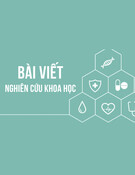


![Tài liệu Từ vựng tiếng Anh cho bé [chuẩn nhất/mới nhất]](https://cdn.tailieu.vn/images/document/thumbnail/2025/20250731/huadaithesang2509@gmail.com/135x160/18631754013896.jpg)





